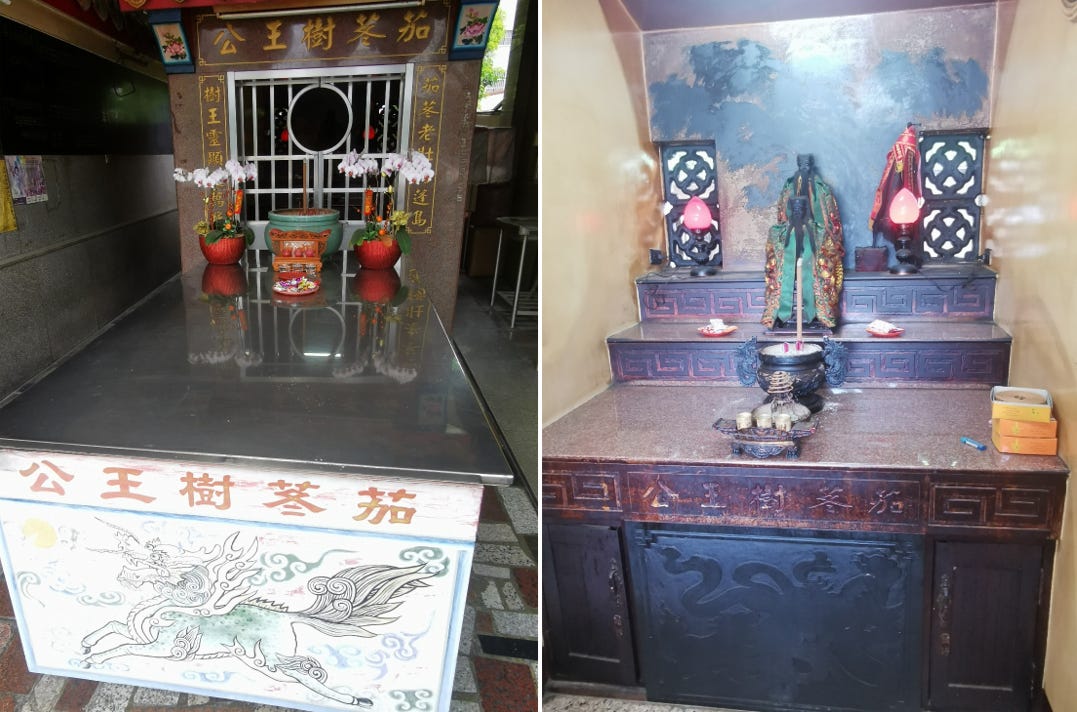Gerald channels Mao, Jeff explains why your planes and trucks are running on Sino-stir-fry oil, T.P. explains nihilism, and Matt goes all in for Tesla and Poe. Not bad for a Tuesday, huh?
China Writers' Group is your one-stop brain shop for understanding our reality behind the West's Big Lie Propaganda Machine headlines!
Pictured (3 of 3): this Taiwan Province, Nantou ancestral temple was explained in two previous Substack posts (see June 1 and 2). This ancestral temple adds a Local/Land God shrine. Local gods predate Confucism, Daoism and Buddhism by millennia and instead of replacing them, they have been absorbed into popular religious practice. They were often an ancient local king/duke/governor, general or other celebrated citizen who became deified over time. They can manifest luck, fortune, business, health, fertility & food (usually a goddess), military prowess, agriculture/weather and the other hopes and dreams of daily life. Sometimes it was a married couple and in the case above, with two gods portrayed, they might have been brothers, father and son, etc.
The shrine’s name is 茄笗树王工,which means “Lotus Petasites japonicus Nobility”. Lotus flowers have deep roots in Buddhism, representing purity, spiritual enlightenment and resilience. Petasites japonicus (butterbur) is a very popular fast-growing, flowering plant across Asia with giant leaves, so here, it might mean abundance or prolificity. Like the ancestral temple, there are orchids, representing love and fertility. Above the steel altar door are red peonies, China’s national flower, that evoke wealth, honor and noble character. The white painting in front is an ever-present Pixiu. Candy is on a plate as an offering in front of an incense pot.
The right photo is taken inside the altar. There are the two local gods, with long, flowing black beards. There is a black Pixiu fresco below, plenty of spiral incense for long burning, a two-handled dragon incense pot, three tea mugs, two plates of candy and two peach lamps, which represent immortality and fertility. The black free-form painting in back is a mystery to me and there was no one to ask.
One difference between Taiwan Province is the gods, arhats, bodhisattvas and Buddhas are frequently black, whereas on the Mainland they are usually gold-colored.
Most people see a simple structure with everyday accoutrements. Nevertheless, in China, there is much symbolism and detail to enrich the experience.
Jeff on the streets and roads with the Chinese.





